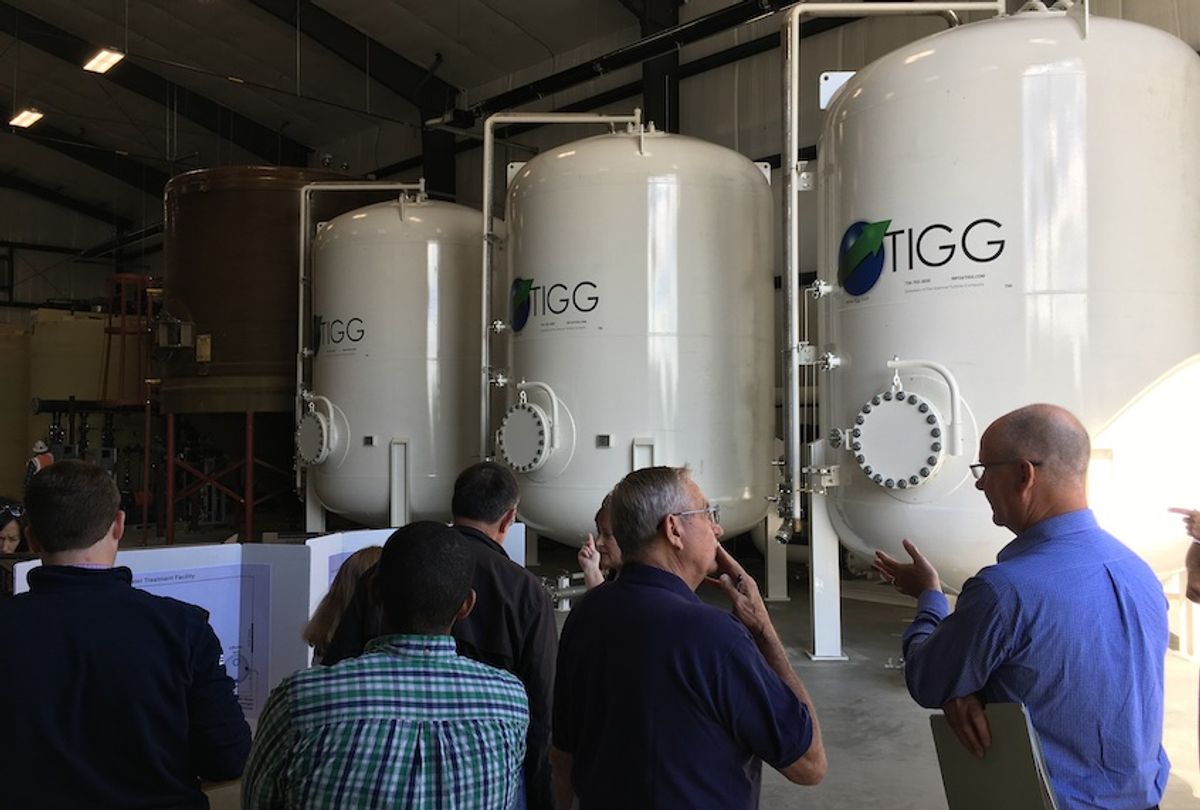The COVID-19 crisis has been practically defined by uncertainty – uncertainty about its transmission, why it impacts some people more than others, and how to mitigate risk in our daily lives.
On June 11, the US Centers for Disease Control (CDC) acknowledged one more uncertainty: we have no idea how a potent family of chemicals, called PFAS (per- and polyfluoroalkyl substances), is impacting our risk for COVID-19. What we do know about PFAS makes this acknowledgement very worrisome. Because of their unique chemical properties that allow them to repel both oil and water, PFAS are everywhere, appearing in Teflon frying pans, stain-resistant carpeting, outdoor gear, and fire-fighting foam, to name just a few.
PFAS are potent immunotoxicants, meaning they impair immune responses in both humans and animals. Research tells us PFAS reduce vaccine efficacy and antibody response in humans, at concentrations readily found in our blood. This was first documented in a study on efficacy of tetanus and diphtheria vaccines in relation to PFAS levels in children from the Faroe Islands. Infants exposed to high PFAS levels in utero had reduced antibody levels at five years old. With each doubling of PFAS in the children's blood, the overall antibody response was cut by almost 50%. Some children were found to have antibody levels at age five that clinically qualified them for further vaccination, meaning they weren't adequately protected from diphtheria or tetanus, even though they had already been vaccinated for these diseases as a baby.
Further research has confirmed the association between reduced antibody responses and PFAS for multiple diseases, in mice as well as in multiple human populations.
The lead author of the Faroe Islands study, Dr. Philippe Grandjean from the Harvard T.H. Chan School of Public Health, sees the link between PFAS and COVID-19 based on his previous work. "Given that PFAS are toxic to the immune system, exposure to these persistent chemicals may well worsen the consequences of a COVID-19 infection. Just like recent studies have shown that areas with more severe air pollution have more severe COVID-19 cases and greater mortality, we should also examine if the same applies to communities with PFAS-contaminated drinking water."
Epidemiological studies reveal that PFAS exposure is associated with other immune-related maladies. These studies suggest people with higher PFAS levels have a harder time fighting off illness, get sicker than folks with lower PFAS levels, and are more likely to suffer from an autoimmune disease.
However, we aren't exactly certain how PFAS can cause all these immune outcomes. The immune system is complex, and many facets of its form and function are areas of active research. Our incomplete comprehension of the immune system makes pinning down how chemical exposure influences immune outcomes a challenge. Right now the best solution to mitigate the impacts of PFAS on our immune systems is to remove them from the environment.
But, as we stare down a continually deteriorating global pandemic, our lives are practically saturated with these immune system saboteurs. Decades of reckless chemical deregulation mean that most people in the US have these compounds in their blood. PFAS are used in everyday consumer products, industrial processes, and military applications, and they make their way out of these intended uses into drinking water, agricultural products, packaged foods, air, soil, surface water, and wildlife. And they remain in the environment or living organisms indefinitely once there. PFAS have never been formally regulated at a federal level, even today. The US Environmental Protection Agency offers unenforceable drinking water guidelines, forcing states to act independently to implement their own regulations. But at a federal level we keep allowing the creation of new PFAS, even as we learn more about the toxic effects of older formulations.
Right now, this grim set of circumstances has no happy ending. We know little about COVID-19 on its own, though this is rapidly evolving. And as the CDC acknowledges, we know very little about the interaction of PFAS exposure and COVID-19. But we do know that neither COVID-19 nor PFAS are going to "fade away", and every ounce of new information about risk or impacts is vital to keep our communities healthy. More research about the relationship between PFAS and COVID-19 is desperately needed.
But here there is some hope. We already possess tools to figure out the relationship between COVID-19 and PFAS. "PFAS exposures can be determined from the analysis of a blood sample, and we should therefore compare blood-PFAS concentrations in hospitalized patients with those who were infected but escaped any serious disease development," says Grandjean. Now is the time to leverage these tools, particularly in support of those communities that continue to wrestle with high levels of PFAS exposure with no resolution in sight.![]()
These resources provide more information if you're concerned about PFAS contamination in your community:
- STEEP: Sources, Transport, Exposure, and Effects of PFAS, NIEHS Superfund Research Program
- Silent Spring Institute
- The PFAS Project
- ATSDR: PFAS and your health
- The C8 Project
- EPA web resources




Shares